Polar Grit X2 Pro review: rugged potential
Navigate, track, and conquer every trail with the Polar Grit X2 Pro
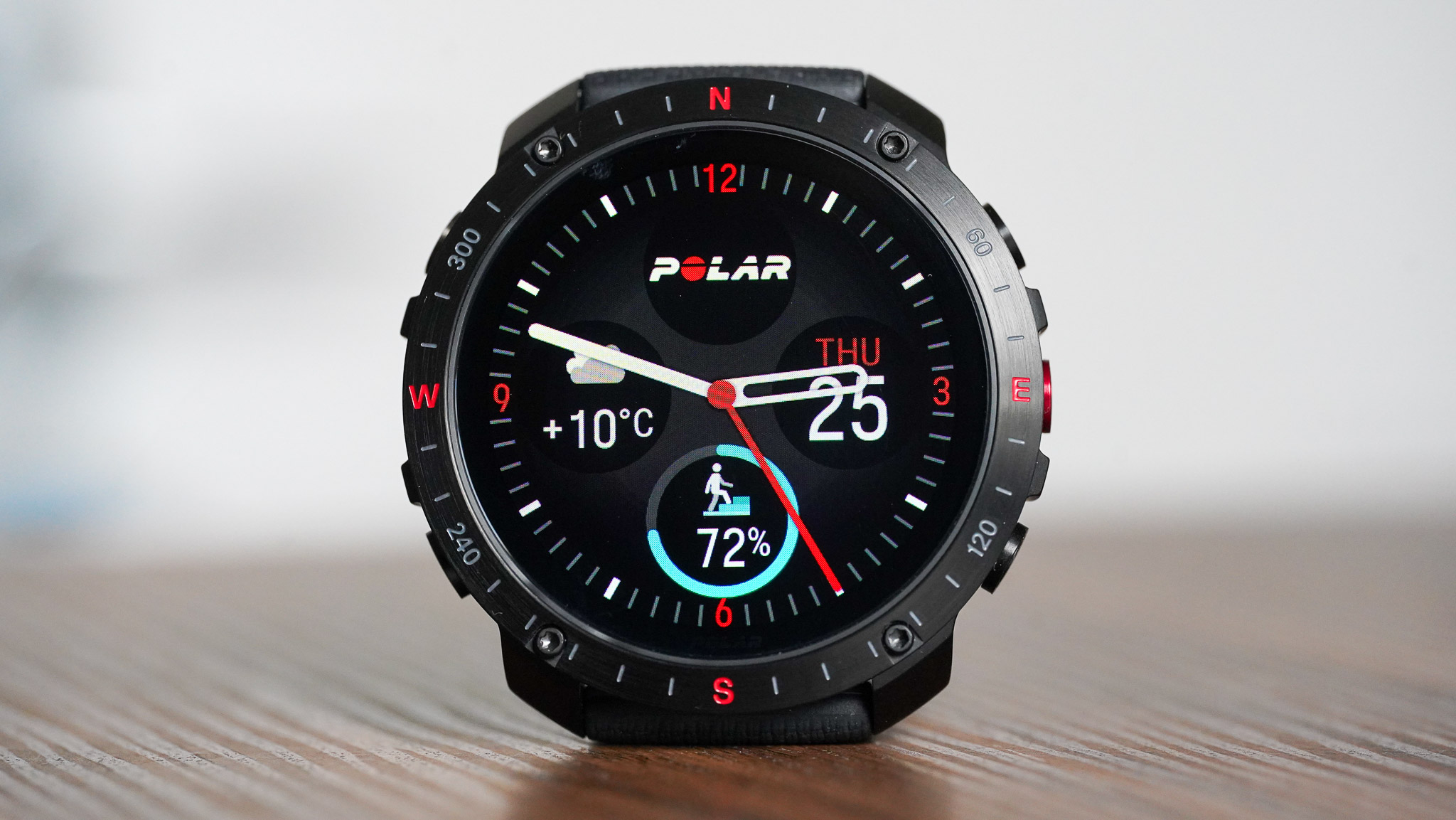
Packed with features like dual-frequency GPS and a comprehensive training suite, Polar’s Grit X2 Pro is a solid choice for outdoor enthusiasts. It boasts a rugged design, including a stainless steel case and sapphire glass lens, multi-band GPS, and a bright AMOLED screen. It’s a bit bulky, though, and the higher price may deter some potential buyers.
-
+
Rugged design (e.g. stainless steel case and scratch-resistant sapphire glass lens)
-
+
Comprehensive training suite
-
+
Long battery life and quick charging time
-
+
Ample storage for offline maps and routes
-
-
Bulky design may not be comfortable for all-day wear
-
-
Adding offline maps and sync could be smoother
-
-
Inconsistent heart rate readings compared to other brands
Why you can trust T3

It’s been out for a month or so, but I finally got my hands on the Polar Grit X2 Pro, the latest rugged outdoor wearable from the Finnish manufacturer. I’ve been testing the watch for a few weeks, pitting it against different wearables to see if it’s worth the hefty price tag.
The successor of the Grit X Pro, people call the Grit X2 Pro both a rugged Polar Vantage V3 and a Garmin Fenix 7 Pro clone – I wondered if any of these monikers are accurate. The former is one of the best triathlon watches, while the latter is arguably the most popular outdoor watch at present.
After spending some quality time with the Grit X2 Pro, I can see why people compare it to those two. However, I believe the most direct competitors are the Garmin Epix Gen 2 and the Epix Pro. And, of course, the Apple Watch Ultra 2, thanks to its broad appeal.
Knowing all this, should anyone opt for the Polar Grit X2 Pro? What’s good/bad about the watch? Let’s find out.
Polar Grit X2 Pro review
Price and availability
The Polar Grit X2 Pro was announced in March 2024 and is available to buy now directly from Polar US, Polar UK and Polar AU for a recommended price of $749.95/ £649/ AU$1,099. It’s available in two colourways: Night Black and Stone Gray.
The watch is also available with a titanium case and bezel for $869.95/ £749/ AU$1,299. The Polar Grit X2 Pro Titan is lighter, but otherwise, it’s identical to the standard model. I tested this model.
Specifications
- Dimensions (W x H x T): 48.6 x 48.6 x 13.4 mm
- Weight: 57 g (without band), 79 g (with band)
- Display: 1.39” AMOLED touchscreen
- Display resolution: 454 × 454
- Case and bezel: Stainless steel
- Lens: Sapphire Glass
- Connectivity: Bluetooth 5.1
- Water resistance: WR100
- Battery: up to 43 hours (GPS on); up to 10 days (smartwatch mode)
- Global positioning: Dual-frequency GPS
Design and build quality
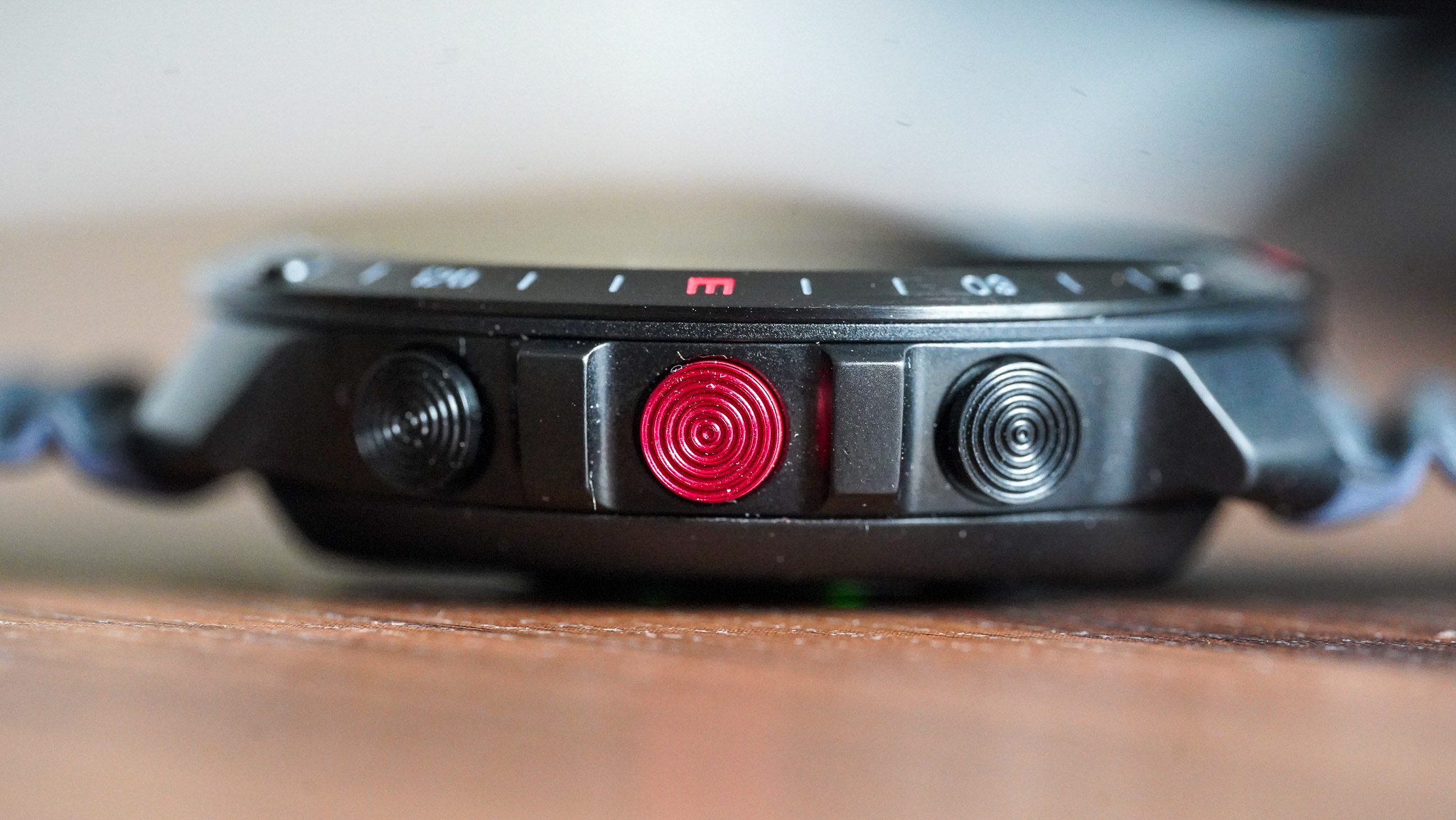
Even in the press photos, the Polar Grit X2 Pro looks very similar to Garmin’s Fenix line. The case’s shape and bezel’s design closely resemble the main rival; however, the rest of the physical features are very much in line with Polar design philosophy.
The five physical buttons are laid out in a classic Polar watch fashion. They are raised and easy to press with gloves on. Plus, thanks to the concentric circles embossed on them, they have a nice grip. The pressing sensation is good, too.
The Grit X2 Pro has a 48 mm case size—roughly the same size as a ‘medium’ Fenix or Epix. Without the strap, the watch weighs 57 grams, which is roughly the same as the other two (53 and 50 grams, respectively). The Titan version is lighter at 48 grams.
In terms of sensors, the Grit X2 Pro is built on Polar’s Elixir platform, introduced in the Vantage V3. Elixir is the latest biosensing innovation from the brand and includes an ECG, blood oxygen and skin temperature sensors. It also features the company’s newest optical heart rate sensor.
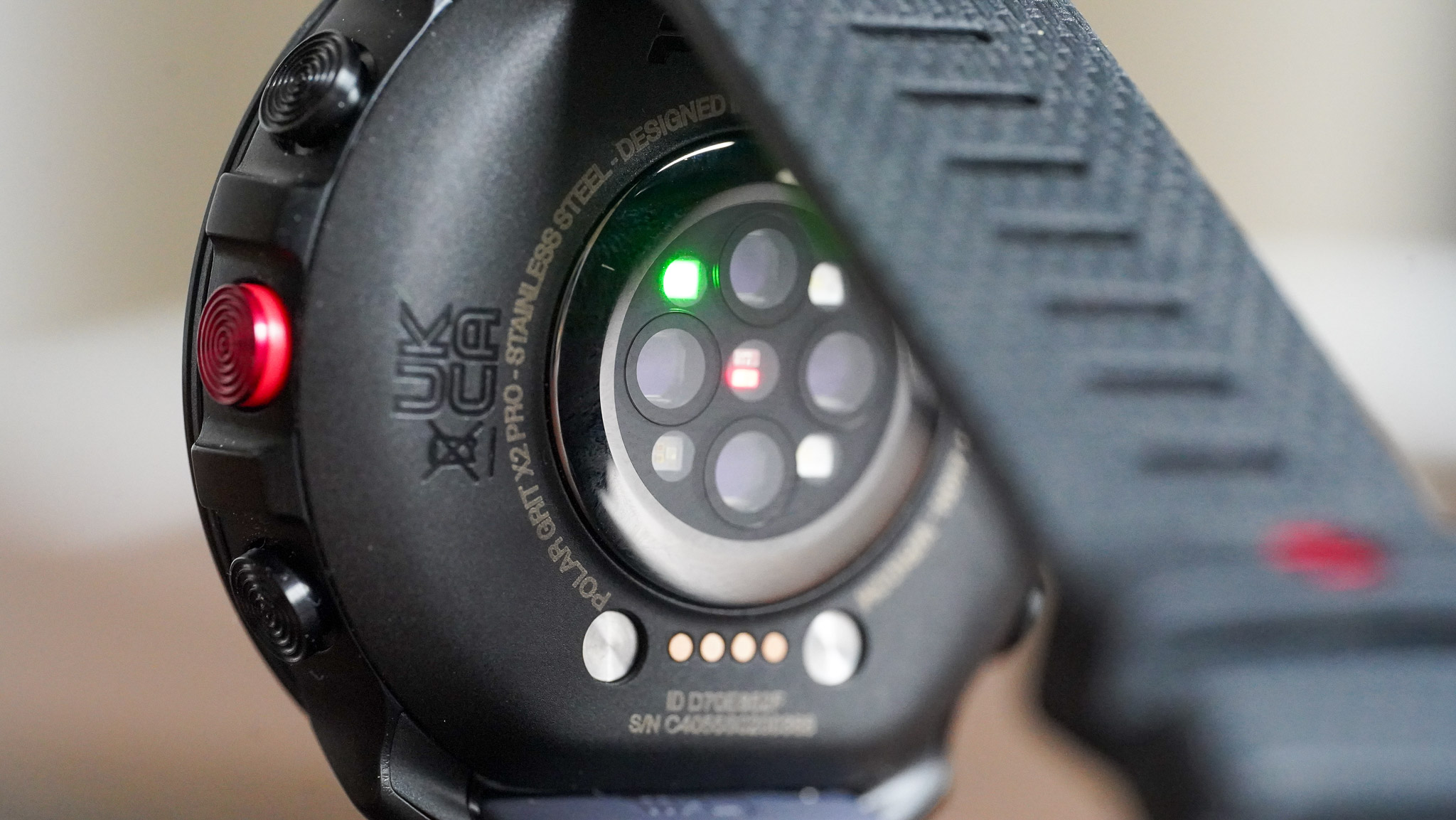
Elixir wearables play nicely with each other, which means you can use the Sennheiser Momentum Sport with the Grit X2 Pro. The running headphones have a temperature sensor; however, buying both would set you back around a grand, which is a big financial commitment.
The Grit X2 Pro has the same display as the Vantage V3, which, I assume, is why many people get the impression that the former is ‘just’ the latter in rugged housing. The 1.39-inch AMOLED touchscreen has a resolution of 454 × 454 pixels and looks bright enough in most lighting conditions.
For comparison, the Epix Gen 2 and Epix Pro have 1.3-inch displays with a resolution of 416 x 416 pixels, so somewhat smaller and less detailed. The Fenix line has Memory In Pixel displays, so a comparison wouldn’t be fair.
As a rugged watch, the Polar Grit X2 Pro is built to everyone’s favourite MIL-STD-810H standard and is waterproof to 100 ATMs. The display is protected by a scratch-resistant Sapphire glass lens. The operating temperature is between -20 and 50 degrees Celsius (-4 - 122°F), which is suitable for most outdoor activities.
Features
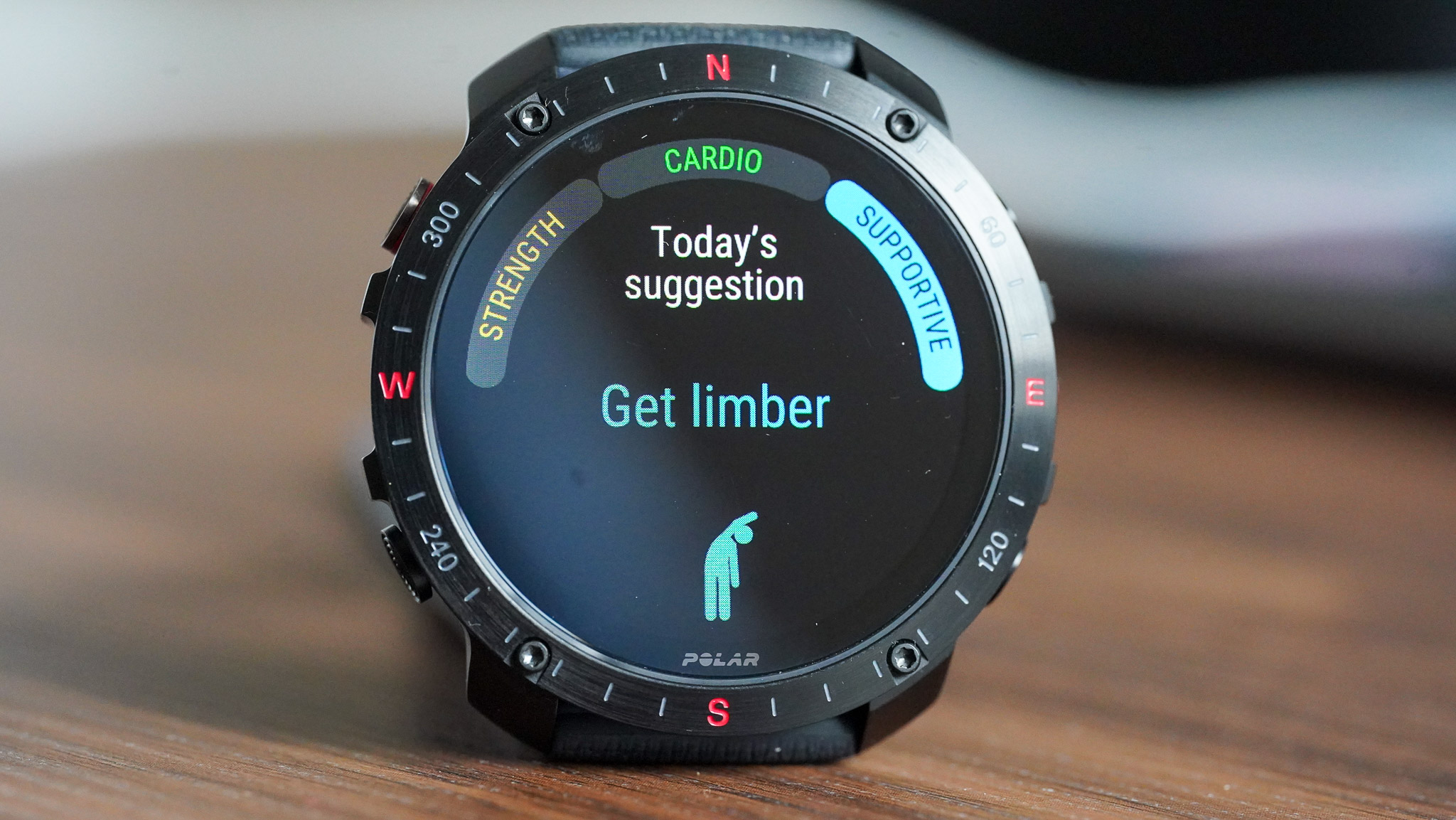
The Polar Grit X2 Pro has all the Vantage V3 features—actually, the feature sets on both are identical. After all, the Polar Grit X2 Pro is essentially the Vantage V3 in a rugged case. This shouldn’t come as a surprise; most of the Fenix features can also be found in—let’s say—the Garmin Forerunner 965.
What are these features, though? Polar is famous for its recovery suite, and as such, the Grit X2 Pro has many functions that enable you to sleep better and stress less, such as Nightly Recharge, SleepWise, and nightly skin temperature readings.
Things look a bit sparser in the wellness department: you only get Serene, which is a simple breathing coach. Admittedly, breathing has a significant impact on health and performance (as noted in my Oxa Breathing Coach review); however, Serene is pretty basic, sadly.
Some of the most popular features of Polar watches are the different tests, and the Grit X2 Pro has all of them. These include the Leg Recovery Test, Running and Cycling Performance Tests, Fitness Test (to determine VO2 max), and the mysterious Orthostatic Test.
As expected, the Grit X2 Pro is chock-full of training features, from measuring training load to suggesting fuelling strategies. The watch can also measure running power on the wrist—I always found this a bit redundant, as most wearables give you completely different results—and Vertical Speed & VAM.
Vertical Speed is similar to Garmin’s 3D Speed and takes elevation into account when calculating velocity. According to Polar, VAM (ascent speed) gives you an idea of “how many meters you would climb in an hour if you maintained your current pace.” Both of these features are very much aimed at trail runners.
Maps and navigation
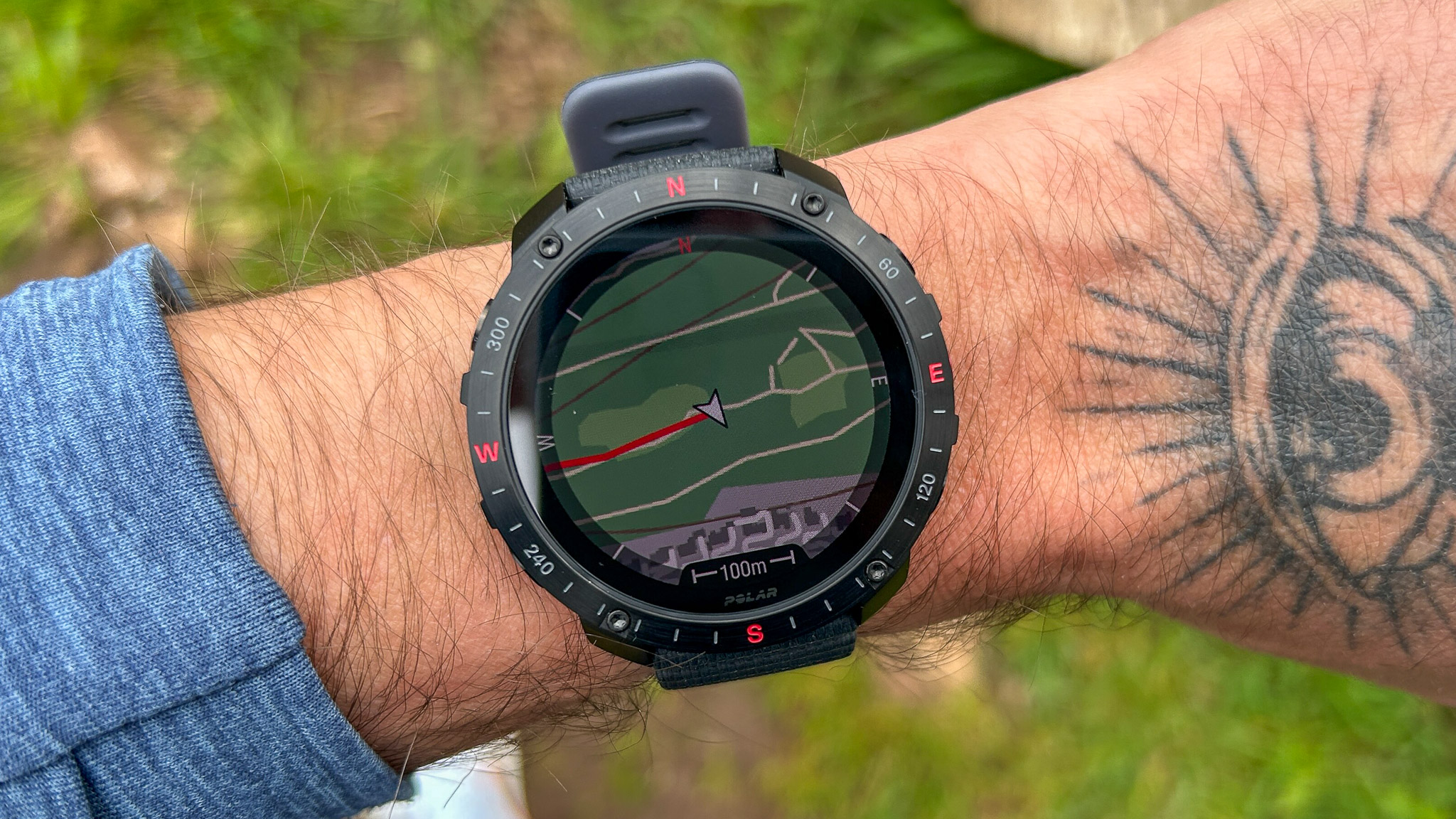
The Grit X2 Pro has 32GB of memory for offline maps (sadly, still no offline music support). The watch already has North America and Europe downloaded as default, and you can add more using the Polar web app (external link).
In classic Polar fashion, the process requires a bit more effort. You need to connect the watch to your computer via a USB cable (after all, the Grit X2 Pro doesn’t have WiFi, only Bluetooth), download the maps to your computer, and then transfer them to a separate application.
If you’re on a Mac, the process is even more complicated, as you’ll need to download the Android File Transfer app to see the connected watch on your computer. Dragging over the file is simply enough, though.
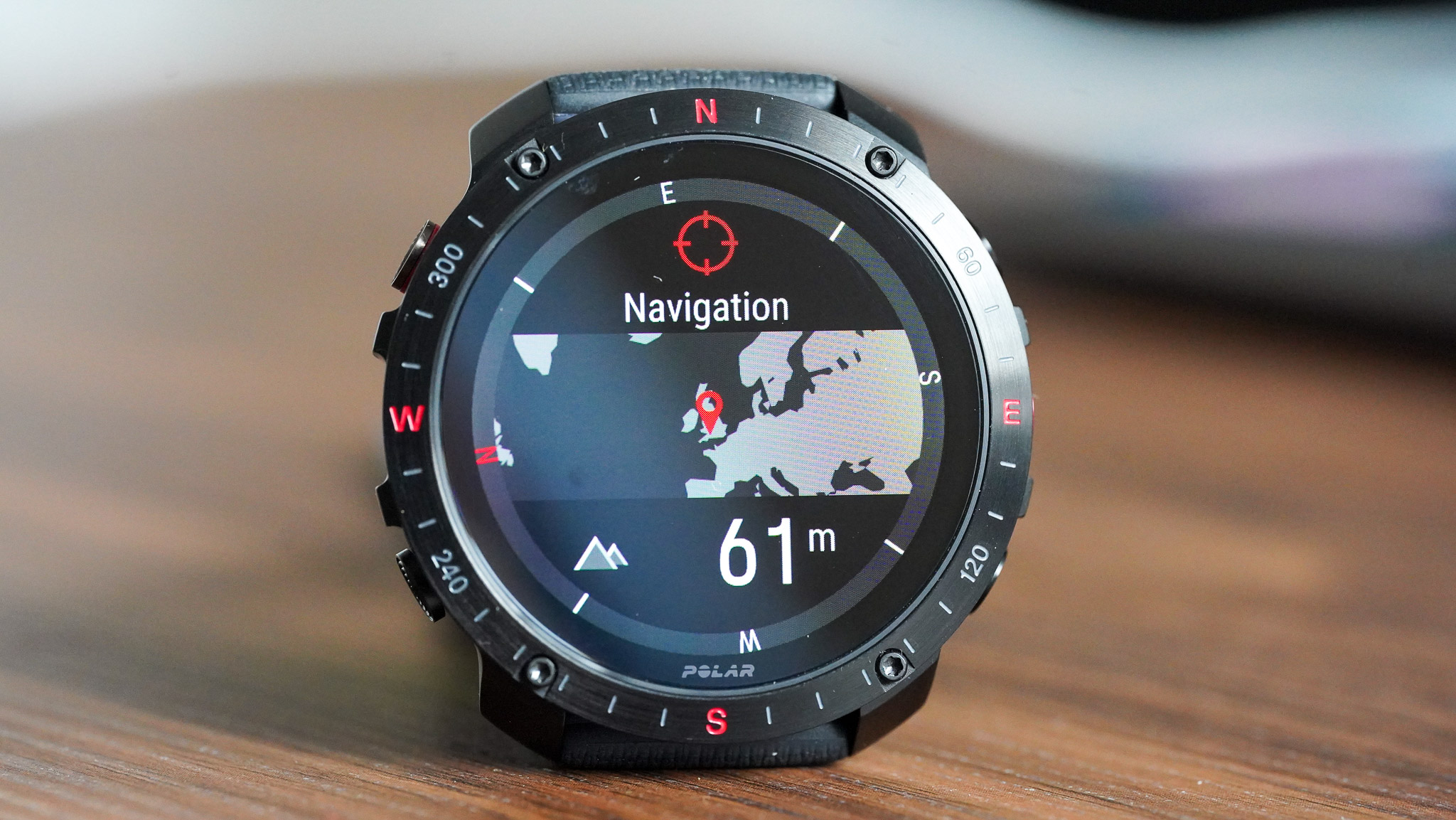
The maps themselves aren’t too detailed, even the more local ones. They're certainly not on par with Garmin’s, which has POI navigation and more. You can see the roads, buildings, etc., but there are no labels to help you identify anything on the map.
On a more positive note, the 2.0.19 firmware update (external link) finally made maps accessible outside of training via the Navigation view. From the watch face, swipe left or right until you reach it, then tap the display to open the details.
There is plenty of storage space to download more detailed maps, which is good.
Routes can be created and imported via two third-party apps, Komoot and Strava. These are automatically fetched from the service and synced to both your favourites in Polar Flow and the routes on your watch the next time you sync the watch with the Flow app.
Speaking of Komoot, turn-by-turn guidance is only available on routes imported from the app. Something to keep in mind.
Battery life
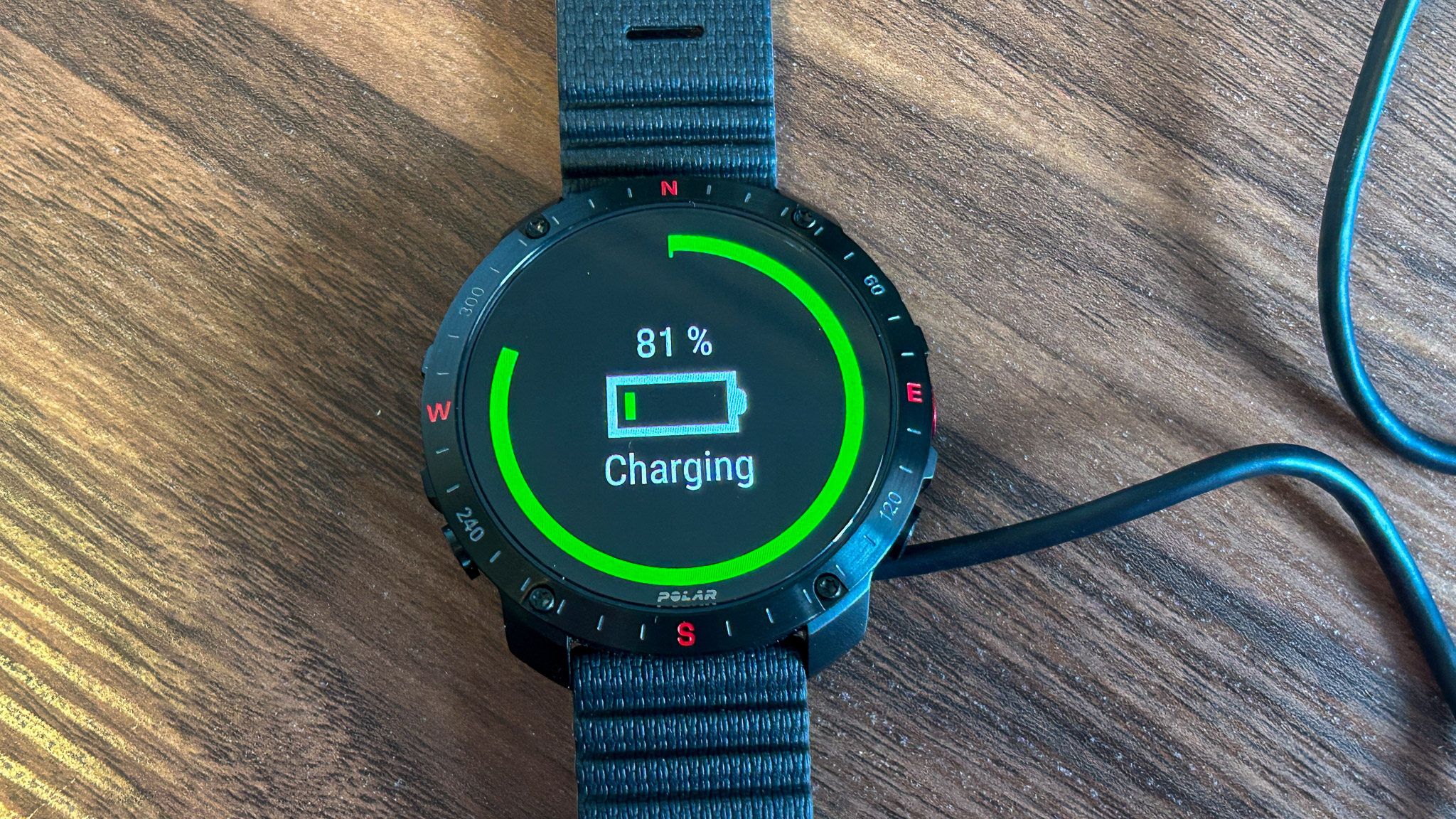
The Polar Grit X2 Pro has a long battery life and charges rapidly. I couldn’t find an official number for the latter, but based on my experience, you can throw the watch on the charger for 10-15 minutes and replenish a good chunk of the battery power.
Maximum battery life will depend on a number of factors, including ambient temperature and what features are active, but the official numbers are up to 43 hours with the GPS on and up to 10 days in smartwatch mode.
One peculiar thing about the watch is that you can’t change the GPS mode in the workout mode settings; you can only do it in the main settings menu by going into General Settings/ Positioning satellites. You’re given two options here: ‘Better accuracy’ and ‘Power save’, the former of which means multi-band GPS (I assume).
Performance
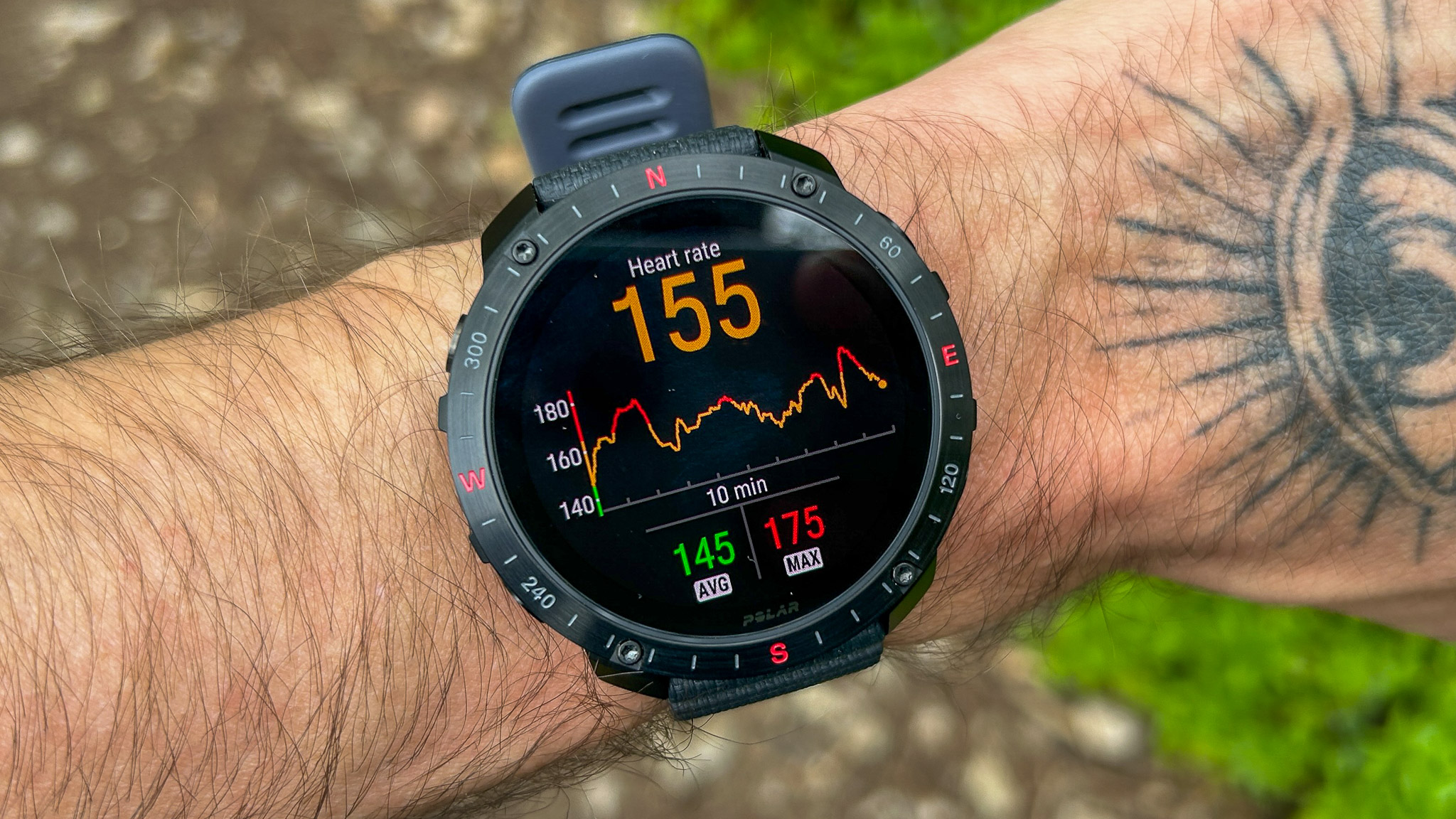
During the testing period, I took the Polar Grit X2 Pro on runs and walks. I also monitored my vitals during the day and even put it on for sleeping on a couple of occasions. That said, like the Fenix watches, the Grit X2 Pro is too bulky, and the silicone strap is not breathable enough to make the watch comfortable to wear 24/7.
(An easy fix is to get a fabric quick-release strap.)
From a performance perspective, the Grit X2 Pro is essentially the same as the Vantage V3 (read more about the Vantage V3’s performance here). Dual-frequency GPS is on point, albeit it usually took a little longer for the watch to find a signal than the Garmin Forerunner 965.

Heart rate readings are a bit of a mixed bag. I had runs when the two watches produced very similar graphs (Garmin here, Polar here); however, on occasion, the Polar’s readings were way higher than the Forerunner 965 coupled with the HRM-Pro Plus (Garmin here, Polar here).
Polar’s readings are consistently higher than other brands, and so are the VO2 max estimations, the latter of which I always liked, as who doesn’t appreciate a wearable saying their maximum oxygen intake is through the roof?
Jokes aside, I wonder if using the watch for longer (i.e. a few months) non-stop would help improve this. I am not sure, as in my experience from the last five years or so, Polar wearables are pretty consistent in this regard.
Verdict

When I spoke to Polar CEO Sander Werring last year, he emphasised that the company aims to provide a continuous experience with its wearables. This means if you used a Polar watch in the past, chances are you’ll find your way around the Grit X2 Pro easily.
This is true not only for the user interface but also for the overall smartwatch experience. If Polar’s primary goal is to retain its users, it’s doing a mighty fine job. If it wants to convince Garmin\ Apple Watch users to switch to Polar, that might be a little bit harder with this approach.
I know many people who like the Polar ecosystem and appreciate the brand’s approach to upgrades. The Polar Grit X2 Pro is also a much better watch than the Grit X and the Grit X Pro.
There is a lot to like about the wearable, from the fast processor to the myriad of training and recovery features. If you’re keen on Polar and have always wished the company had a watch that can rival Garmin’s Fenix line, the Grit X2 Pro is the watch you’ve been waiting for.
If you’re considering switching from Garmin, Suunto, or Apple to Polar, it’s a tougher sell. The Grit X2 Pro isn’t cheap, which is understandable considering the premium case, and the features on offer aren’t revolutionary, either.
Unless you need the tough case, you’re arguably better off with the Vantage V3, which is essentially the same watch as we discussed above. If you’re happy to splash the cash on a premium outdoor watch from Polar and are familiar with the brand, though, the Grit X2 Pro won’t disappoint.
Also consider
The Coros Apex 2 Pro is a rugged outdoor smartwatch offering impressive battery life, multi-GNSS positioning, and dedicated sports modes. While lacking the premium feel of Polar's wearable, its value shines with features like TOPO maps and a fast processor. A solid choice for adventurers on a budget. Read my full Coros Apex 2 Pro review.
The Suunto Vertical also boasts impressive mapping capabilities, extended battery life with solar charging (something the Grit X2 Pro lacks), and solid build quality. While a decent choice for outdoor navigation, competition at similar prices offers more versatile options. Read my full Suunto Vertical review.
Sign up to the T3 newsletter for smarter living straight to your inbox
Get all the latest news, reviews, deals and buying guides on gorgeous tech, home and active products from the T3 experts

Matt Kollat is a journalist and content creator who works for T3.com and its magazine counterpart as an Active Editor. His areas of expertise include wearables, drones, fitness equipment, nutrition and outdoor gear. He joined T3 in 2019. His byline appears in several publications, including Techradar and Fit&Well, and more. Matt also collaborated with other content creators (e.g. Garage Gym Reviews) and judged many awards, such as the European Specialist Sports Nutrition Alliance's ESSNawards. When he isn't working out, running or cycling, you'll find him roaming the countryside and trying out new podcasting and content creation equipment.
-
 Warning: Ciele’s refreshed Elite Collection may cause excessive garment envy on race day
Warning: Ciele’s refreshed Elite Collection may cause excessive garment envy on race dayFlex on your run crew with Ciele’s latest drop
By Matt Kollat Published
-
 Smeg adds a touch of navy sophistication to its iconic breakfast set
Smeg adds a touch of navy sophistication to its iconic breakfast setIt's a minimalist's dream
By Lizzie Wilmot Published
-
 My most anticipated Netflix movie of the year gets a wild new trailer
My most anticipated Netflix movie of the year gets a wild new trailerHavoc looks pretty unbelievable
By Max Freeman-Mills Published